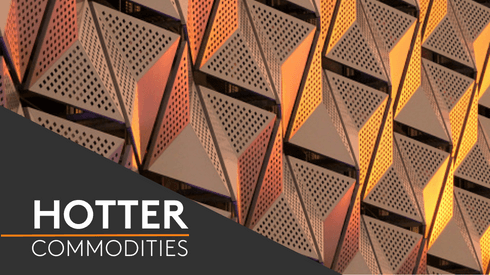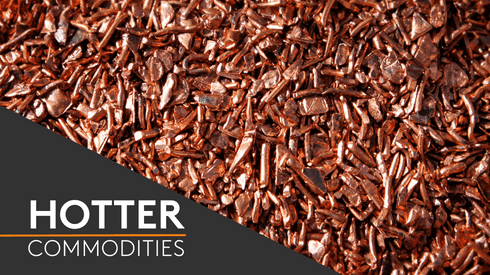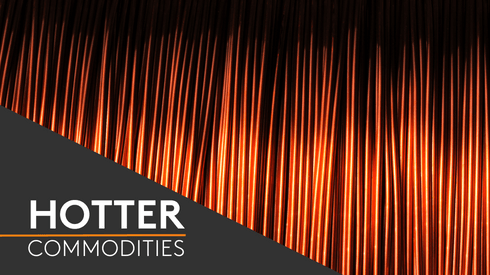Producers of primary alloys face challenges in sourcing not just the right volumes of scrap but the right grades, amid a global supply-and-demand imbalance, delegates heard at the event, held September 10-12.
Investing in technology that can extract the desired grades from a diverse blend of shredded materials will be necessary for the industry to access sectors of the scrap market that were previously off-limits from a technological perspective, the conference heard.
“Novelis is making significant investments in processing capacity,” Derek Prichett, the aluminium-rolling company’s senior vice president for global metal, said. “In order to meet the supply challenges, we are looking much more at grades of scrap that we had not previously processed, including things such as end-of-life automotive twitch.”
Prichett was speaking on September 12 as part of a panel discussion examining the growing challenges of scrap supply in the aluminium industry amid a global shortage.
“Europe is very short of scrap,” Prichett said, “and we view North America and Asia as even more difficult.”
Primary alloys, also known as wrought alloys, are types of aluminium that have traditionally been produced by smelting from alumina, a process which is highly energy intensive. These compare with secondary alloys, used for castings, which have long been made from scrap, a process with a much lower carbon footprint.
Producers face pressure to decarbonize
In recent years, producers of wrought aluminium alloys have been seeking to maximize the scrap content of their raw materials mix, amid the pressures of decarbonization. This has led to rising demand for wrought-friendly scrap grades, as well as competition with secondary producers, which can use all grades of scrap.
Kirstine Veitch, principal consultant with Fastmarkets, noted that recent increases in demand for wrought scrap had largely focused on easy-to-access pure grades that require minimal processing.
But she also said that these streams were becoming stretched because domestic US and European demand have grown. This was partly because longer-to-develop rolling mills have joined an initial expansion of billet production capacity, and also because of competition with export markets.
“[The billet producers] are looking for the very quick, easy-to-use grades which you can put straight in and remelt, and bring out a [wrought alloy],” Veitch said. “It is becoming more challenging to get these grades, and a lot of that material has been flowing out of Europe, out of North America, and into Asia.”
While some of the wrought scrap exported to markets such as India was used to make billet, some was also being used to make secondary alloys, Veitch said.
This can be considered a waste, she said, on the basis that wrought scrap can be used to make secondary or cast aluminium, but cast scrap cannot be used to make wrought aluminium billet. Once wrought aluminium is downgraded into cast, it cannot return to wrought (at least under current technological limitations).
Veitch highlighted that the prices of these scrap grades have been rising over the past few years and for some grades were approaching parity with the London Metal Exchange aluminium price, due to the increasing supply-demand imbalance.
“Some of these grades are getting very close to 100% of the LME [price],” Veitch said. “[That will continue] until we see more buyers and users starting to invest in the processing and taking a wider range of scraps.”
Prichett explained that scrap sorting technologies ranged from the more straightforward physical sortation methods, that can remove non-metallic impurities as well as steel and other metallic contaminants, to more recent technologies such as X-ray and laser-induced breakdown spectroscopy (LIBS).
He agreed with Veitch that, ideally, wrought scrap should be used only to produce wrought alloys. He said that this downgrading could be reduced by using X-ray and LIBS sorting, which allow the extraction of wrought material from shredded end-of-life automotive scrap.
“There is a very good opportunity there to recover more wrought scrap and put it back into wrought products, which is where we believe it should go, long term,” Prichett said.
“That technology is definitely improving by leaps and bounds,” he added. “The productivity is getting better, the costs are going down, [and] our supply network is getting better, [so] there’s an opportunity for us to really dig in [the automotive scrap] stream in a way that we have not done previously.”
Shredded end-of-life vehicle scrap, known as zorba, contains significant amounts of non-aluminium impurities but can be upgraded to twitch. Twitch, however, contains a mixture of cast and wrought aluminium, and has therefore traditionally been unusable by wrought aluminium producers.
Challenging trade flows for scrap
While much North America- and Europe-origin scrap is consumed domestically in each region, these are net export markets, and Veitch highlighted this as a key issue for local producers.
“It has become very challenging in terms of the trade flows – the amount of material leaving areas where it’s generated,” Veitch said. “I think that’s putting a huge amount of pressure on the system.”
She went on to say that this outward flow would probably only be curbed when the importing markets, primarily China and India, developed their own scrap collection and processing industries to take advantage of the latent volumes there.
“A lot of the scrap is going to Asia, to China and India,” Veitch said. “[The flow will ease] when these countries start to develop [their own scrap markets] and have big scrap-processing companies. The amount of residual scrap they have in their systems is vast, but supply is going to stay tight for a few years [until these Asian scrap markets are developed].”
The conference panelists also discussed how legislation could be used to increase scrap supply, whether through restricting the outflows from Europe and North America, as suggested by the European Commission, or in maximizing the recyclability of end-of-life aluminium.
“China and India are growing [in terms of output],” Franco Dalpiaz, raw material purchasing manager at producer Raffmetal, said. “They need scrap and they have to import from other places. In Europe, it is important to protect [domestic] production because, if we lose that, then Europe will depend on importing aluminium products.”
Dalpiaz said that although he would not be in favor of an outright ban on exports, an export duty would help European producers to compete with markets where energy, labor and environmental costs are lower.
“Closing the doors won’t help, because then the neighbors will also close the doors, and Europe is importing a significant amount scrap,” Murat Bayram, managing director at scrap processor and trader EMR, said. He highlighted the fact that, while Europe is a net exporter, it still imports certain grades, such as pure wrought scrap.
He added that a blanket restriction on shipments of all grades of aluminium scrap would make no sense, given that domestic demand was expected to rise for some grades but fall for others, and that sorting and processing would also yield lower-value scraps not widely consumed in Europe.
Prichett said that Novelis advocated “common-sense restrictions for scrap grades that can be consumed in Europe, to keep it here and make sure there’s no unfair competition that’s pulling it out and worsening the supply-demand imbalance.”
But he agreed that blanket restrictions would be counter-productive, and also said that there were steps that markets such as Europe could take to reduce inefficiencies and to improve competitiveness.
“There are cost disadvantages [in Europe] but the scrap business is more than just labor and energy costs,” he said. “Melt loss is a huge cost driver because of the very high value of the metal that’s lost – that can actually be more than your total operating cost. If you’re putting in efficient melting and efficient technology, you can be competitive again.”
Veitch suggested that, rather than restricting exports, legislation could be used to facilitate scrap generation through incentives for better product design that would aid end-of-life recycling and reduce mixing and contamination, and therefore reduce the need for sorting and processing.
Bayram agreed. “We need to optimize all the [scrap] streams,” he said, “but as we always say on the recycling side, it all starts with the product design… [Scrap processors] are not magicians. Without [improved] product design, [scrap] recovery will also fail.”
“There are a few positive things happening in Europe [in terms of legislation], Pritchett said. “The EU packaging waste directive has generated some positive movement in terms of aluminium packaging recovery, and there are deposit schemes that will be implemented in several countries in the next few years that will increase scrap flows.”
In response to the growing demand for wrought scrap, Fastmarkets will launch new price assessments in October for 6063 extrusion scrap in the European domestic market.
Want to learn more about our aluminium scrap prices and market insights? Visit our dedicated aluminium scrap page today.






